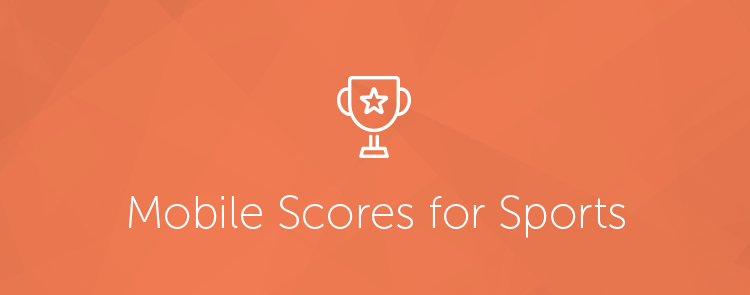The conventional wisdom has always been that there is nothing like experiencing a sporting event in person. After all, that is the only way to get the true “game day” experience, right?
Well, maybe not.
While there is something special about the experience of going to the game, an increasing number of people are enjoying their sports through screens. And we’re not talking about television here. The sports frontier is embracing mobile.
Mobile users are becoming more and more attached to their devices when it comes to sports. Not only are they using devices to watch games at home, but they are also using their smart phones during actual sporting events to track real time conversations, stats and scores.
Clearly this leap into mobile provides an excellent opening for brands, marketers, and especially for the sports teams themselves, to jump into the game.
Strategic Mobile Messaging by F1 Racing Circuit
Mobile or SMS messaging is one huge opportunity for marketers to reach fans. With SMS messaging, brands, marketers, and teams can take advantage of reaching out to consumers in a way that involves limited effort on their end, is personal and is interactive.
The numbers that come with SMS marketing speak for themselves.

According to a study commissioned by SitePoint, 90% of of all incoming SMS messages are opened within 2 minutes of receipt. It’s hard to argue with those numbers, especially when compared to the typical open rates of email marketing campaigns.
Take this case study about Silverstone, the British Motor Racing Circuit, for example.
Having been hit hard by the economic downturn and seeing decreased sales for years, they decided to embrace mobile marketing. Directly following a showing of the famous F1 Monaco Grand Prix, members of Silverstone’s database (approximately 45,000 people) got a text message basically stating that if they enjoyed that race they should get tickets to the F1 British Grand Prix at Silverstone, with a clickable link included.
The results?
An ROI of a whopping 680%!
The MLB and Olympics Embrace Mobile Apps
Digital viewing of the Olympics reached an all time high during the most recent games in Sochi, Russia. This increase had a lot to do with the introduction of using mobile apps to view sporting events.
In the after action marketing report, released by the International Olympic Committee, it was noted that the North American audience viewed “a Winter Games record 10.8 million hours of video” on NBC Olympics digital platforms, including the NBC Sports Live Extra app.
Another big time sports brand embracing mobile marketing is Major League Baseball. In fact, the MLB is so advanced with it’s digital and interactive marketing, it’s own arm (called MLB Advanced Media) is also used by other sports leagues.
In early August 2015, the National Hockey League (NHL) announced that it had sold it’s media rights in a 6 year deal to MLB Advanced Media – an unprecedented move.
MLB has also seen massive success with it’s own app, MLB at Bat, for the last 8 years. They saw over 5 million downloads before the start of last season, and numbers are increasing year over year.
The MLB has embraced mobile technology because it understands it is the best way to reach its fan base. Recently, it announced a new version of MLB at Bat with Apple Watch. Using an app like MLB at Bat allows users to have the information they want right at their fingertips. This increases overall engagement and interest in the product.
Understanding the Fan Base
Sports is a dominant force in American culture, and also one that millions of people are passionate about. So passionate, in fact, they spend time on a daily basis actively seeking out information, results and data on their favorite sports teams.
The sports brands and teams that understand the thirst for that data and capitalize on it by using mobile marketing are seeing huge growth. Being able to watch games and see data on mobile devices enriches the fan experience and makes it enjoyable at anytime, from anywhere in the world – a relatively new phenomenon.
Fans are becoming more active and engaged on their mobile devices. New apps and text messaging are playing a huge part in this shift.


